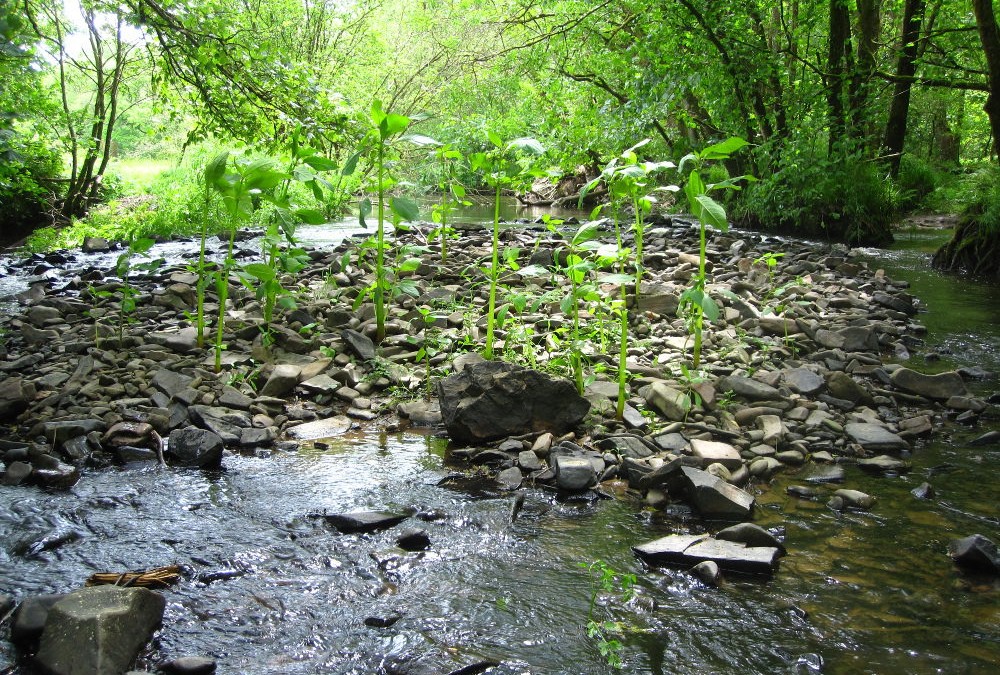Invasive species have been hitting the headlines recently. One of the main problem species in the South-West is Himalayan balsam (Impatiens glandulifera). As the name suggests, this plant originated in the Himalayas and was introduced to the UK by the Victorian plant hunters as a horticultural specimen. Inevitably this became one of many species that was not only able to tolerate, but actually thrive in the UK and has now become a nuisance; prolific in many habitats but particularly wet ground or river corridors. This annual produces pink flowers which are readily spotted in summer months – July is usually the key time to spot, and act on controlling this. The main problems associated with this species are the fact that is can readily out-compete and suppress native species, growing and spreading rapidly resulting in large patches of Balsam, the seed pods explode when ripe or lightly touched which can disperse literally thousands of seeds a matter of meters (but also readily into rivers and streams as means of transport), and once the plant dies back in the autumn its dominance means the lack of other vegetation can result in bare earth. On riverbanks this increases risk of erosion with resulting siltation downstream which is detrimental to in-stream wildlife such as fish spawning sites, or invertebrates which form the baseline of food webs.
As an annual plant, if it is not allowed to mature to seeding it’s spread can be controlled – in fact stopped, by vigilant monitoring and plant removal. Effective control is as simple as pulling up this shallow-rooted plant entirely, and leaving it to wither away (preferably off the ground). Acting now, in July, is most effective as many plants are starting to flower – making them easy to spot, and being mature enough to reduce the chances of later emergence.
Here at the Trust we have carried out a number of projects in the last 10 years to tackle Himalayan balsam, including on the River Camel, River Otter and River Taw. However, the best advice is for landowners to be aware and aim to control areas regularly in summer months. This will demonstrate change in a couple of years as the seedbed has a limited viable germination period, For the most effiecent way of eradicating balsam from your land, start upstream and work down. This will prevent the potential for seeds to be washed down the river and prevent further spreading.
For full details and guidance on this and other problem species, see http://www.nonnativespecies.org/index.cfm?sectionid=47
Share Tweet

